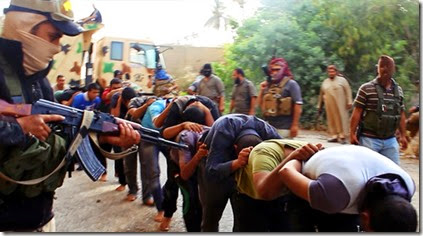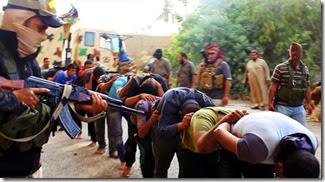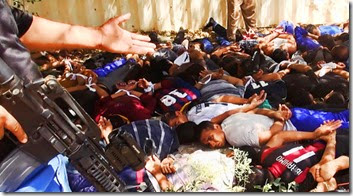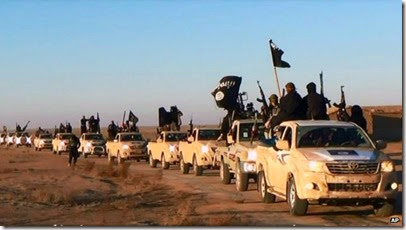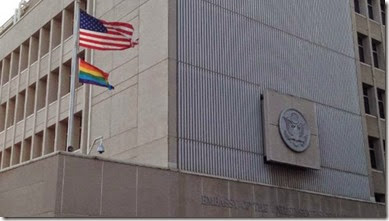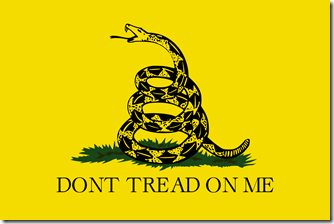"Let us recollect that peace or war will not always be left to our option; that however moderate or unambitious we may be, we cannot count upon the moderation, or hope to extinguish the ambition of others." — Alexander Hamilton, Federalist No. 34, 1788
As recently as 2009, then-CIA Director Michael Hayden said, “Al-Qaida is on the verge of a strategic defeat in Iraq.” Yet in just a few short years, we have watched the entire Middle East melt down in the “Arab Spring” after Barack Obama sounded the retreat from Iraq and Afghanistan, falsely claiming that al-Qaida and Islamic terrorism were “on the run” after Osama bin Laden’s termination. Indeed, Jihadis with the Islamic State in Iraq and Syria (ISIS) have now seized the key Iraqi cities of Mosul and Tikrit — after retaking Fallujah in January. Baghdad is next. According to an American counterterrorism official, “The group looks at Syria and Iraq as one interchangeable battlefield, and its ability to shift resources and personnel across the border has measurably strengthened its position in both theaters.” If the U.S. still had a sizable troop presence in Iraq, it’s possible — if not likely — that Iraq would be stable today. Perhaps even Syria would be. Instead, the region has paid a high price for Barack Obama’s Hope ‘n’ Change, as al-Qaida didn’t die just because Obama said it had.
Retired four-star Army General Jack Keane said Thursday on "Special Report with Bret Baier" that the U.S. created a huge vacuum by leaving Iraq, as the country faces a Sunni insurgency that has already claimed two key northern cities and is threatening Baghdad.
Keane said it's clear that since the U.S. military left the country in 2011, the Iraqi army has become "hollowed out."
"It's kind of like a house where termites have been at it for years and you look at the house and it looks good but the fact of the matter is if you push on it hard it will collapse," he said.
Keane also called Iraq Shiite Prime Minister Nouri al-Maliki “nefarious at best," saying the U.S. "created a huge vacuum by leaving."
"Maliki believed he was on his own kind of like in a life boat without a lifeline and we left him to himself," he said.
Much to the contradiction of Vice President Joe Biden’s 2010 statement that Iraq was a crowning success for the Obama administration Iraq is a shambles. The Islamic State of Iraq and Syria (ISIS), the Al Qaeda off-shoot that now controls nearly a third of the nation, continues to run amok.
An al-Qaeda offshoot extended its gains in Iraq after capturing both the country’s second-biggest city and the birthplace of Saddam Hussein, as the U.S. weighed an Iraqi request for air support.
After seizing Mosul in the north, fighters from the Islamic State in Iraq and the Levant (ISIL) moved yesterday into Saddam’s hometown of Tikrit, about 80 miles (130 kilometers) north of Baghdad, Noureddin Qablan, vice chairman of the Nineveh provincial council, said by phone. In Mosul, ISIL took dozens of people hostage at the Turkish consulate, as hundreds of thousands of residents fled.
The U.S. has yet to respond to a request from Iraq made last month to mount air attacks against militant training camps in western Iraq, according to two American officials who asked not to be identified discussing internal deliberations. One of the officials said President Barack Obama is reluctant to revisit a war that he opposed and has repeatedly declared over.
The surge in violence across northern and central Iraq, three years after U.S . troops withdrew, has raised the prospect of a return to sectarian civil war in OPEC’s second-biggest oil producer. Prime Minister Nouri al-Maliki’s Shiite-led government is struggling to retain control of Sunni-majority regions, and his army units in northern Iraq collapsed in the face of the Islamist advance.
. troops withdrew, has raised the prospect of a return to sectarian civil war in OPEC’s second-biggest oil producer. Prime Minister Nouri al-Maliki’s Shiite-led government is struggling to retain control of Sunni-majority regions, and his army units in northern Iraq collapsed in the face of the Islamist advance.
It’s way past time for the White House to get its head in the game. The disaster unfolding in Iraq and Syria could very quickly spiral into a much, much bigger problem. And some problems are so big that even our president can’t spin his way out.
At the top of the list of what the administration should be worrying about—and preparing to deal with — is the potential for an endless three-way civil war in Iraq. With Sunni, Shia and Kurds fighting one another, it would look something like the civil war in Syria — on steroids.
Two massive civil wars in the middle of a strategically important part of the world is not a good situation for any U.S. president, at any time. It is doubly worse now, with the region still teetering uneasily after the Arab Spring and U.S. stock in the area pathetically low.
The White House should be facing up to the fact that it may soon be staring at a contiguous Islamist state smack dab in the middle of the Middle East.
That state would look eerily similar to Afghanistan, circa September 10, 2001. In some ways, it would be an even more worrisome state. Instead of being based among mountains at the end of the earth, these Al Qaeda look-a likes would be perched just a stone’s throw from Europe and one hop away from a quick transatlantic flight to America.
Even if ISIS doesn’t end up owning a lot of real estate, this campaign will be a huge psychological victory for the terrorist movement.
The Islamists will argue that they bested the army trained and equipped by the Americans. They are clearly on the offensive, which means “the Americans” are in retreat. The message to all extremists: Join us, the winning side.
And don’t expect the war Syria to end any time soon. With a strong base of operations in Iraq, ISIS can always throw more gasoline on that fire and keep that conflict going. It is reported that the ISIS simply walked into a bank in Mosul and left with $400 million in cash. And if that isn’t bad enough they are using captured American supplied equipment from the Iraqi army and police such as Humvees, APC, night vision goggles, and communication equipment.
It has also been reported that the ISIS fighters are killing the captured Iraqi police and army personnel and public beheading them. This is how the Islamic Jihadis work. This is causing mass defections in the Iraqi police and army.
And who is to say the terrorists will stop there? Poor little Jordan teeters on the edge of the abyss. With the Muslim Brotherhood still strong within its borders and Syrian refugees now constituting more than a tenth of its total population, Jordan looks like a target that says “Islamists come after me.”
Finally, who knows what this means for Iran? Tehran will undoubtedly use the opportunity to strengthen its own influence in Iraq, even as it looks to deflect pressure from the US with a faux nuclear deal.
None of these all-too-possible outcomes can be ignored or brushed aside.
Another round of Secretary of State John Kerry’s special shuttle diplomacy would be an exercise in feckless kabuki.
Nor will the usual response from Defense Secretary Chuck Hagel—which pretty much amounts to “Whatever the White House says is OK by me”—cut it.
Serious times require serious measures, not Bart Simpson-like evasions. The administration must drop its business-as-usual (and none-too-“smart” diplomacy) approach to address what are very real and pressing dangers.
The Obama administration reportedly has rebuffed calls from the Iraqi government to carry out airstrikes against Al Qaeda-aligned militants who are on a violent march that is threatening to take over the nation's north.
The insurgents have already seized several major cities, including Mosul and most recently Tikrit.
In a Fox News report entitled: White House mum on pleas from Iraq for airstrikes, as militants gain ground:
“The Obama administration is considering additional aid, but has not specified what assistance it is prepared to send. And, a little more than two years after U.S. troops withdrew from the country, Washington is not committing to helping the Iraqi government with airstrikes.
A senior U.S. official told The Associated Press that the U.S. is considering whether to conduct drone missions for Iraq but that no decision had been made.
The New York Times reported that Prime Minister Nouri al-Maliki has requested airstrikes, but so far has been turned down.
A statement from the National Security Council made no commitment, as insurgents with the Islamic State of Iraq and Syria threaten to advance.
"We are not going to get into details of our diplomatic discussions but the Government of Iraq has made clear that they welcome our support in their effort to confront [ISIS]," spokeswoman Bernadette Meehan said. "We have expedited shipments of military equipment since the beginning of the year, ramped up training of Iraqi Security Forces, and worked intensively to help Iraq implement a holistic approach to counter this terrorist threat. Our assistance has been comprehensive, is continuing, and will increase."
White House Press Secretary Jay Carney, in a statement overnight, offered "condolences" to the families of those killed, but did not specify what actions the administration would take.
"The United States will stand with Iraqi leaders across the political spectrum as they forge the national unity necessary to succeed in the fight against ISIL," he said, adding "we will also continue to provide, and as required increase, assistance to the Government of Iraq to help build Iraq's capacity to effectively and sustainably stop [ISIS's] efforts to wreak havoc in Iraq and the region."
U.S. lawmakers, though, openly questioned whether al-Maliki should remain in power, as his Shiite-led government has targeted Sunni political opponents and, in turn, inflamed sectarian tensions across Iraq.
"He's obviously not been a good prime minister," said Sen. Bob Corker of Tennessee, top Republican on the Senate Foreign Relations Committee. "He has not done a good job of reaching out to the Sunni population, which has caused them to be more receptive to al-Qaida efforts."
The panel's chairman, Sen. Bob Menendez, D-N.J., noted only lukewarm support for al-Maliki, both in Iraq and among U.S. officials. "I don't know whether or not he will actually be the prime minister again," Menendez said. "I guess by many accounts, he may very well ultimately put (together) the coalition necessary to do that."
The rampage has raised new doubts about al-Maliki's ability to protect Iraq in areas that were mostly calm when U.S. troops withdrew from the country less than three years ago. Since then, violence has roared back to Iraq, returning to levels comparable to the darkest days of sectarian fighting nearly a decade ago when the country teetered on the brink of civil war.
Al-Maliki and other Iraqi leaders have pleaded with the Obama administration for more than a year for additional help to combat the growing insurgency, which has been fueled by the unrelenting civil war in neighboring Syria. Northern Iraq has become a way station for insurgents who routinely travel between the two countries and are seeding the Syrian war's violence in Baghdad and beyond.
State Department spokeswoman Jen Psaki said it's expected that the U.S. will give Iraq new assistance to combat insurgents but declined to describe it. Beyond the missiles, tanks, fighter jets and ammunition that the U.S. has already either given or plans to send to Iraq, Baghdad has sought American surveillance drones to root out insurgents.
"The situation is certainly very grave on the ground," Psaki said Wednesday. She said the U.S. is encouraged by Baghdad's recent promise for a national unity effort but "there's more that Prime Minister Maliki can do."
"We agree that all Iraqi leaders, including Prime Minister Maliki, can do more to address unresolved issues there, to better meet the needs of the Iraqi people," Psaki said.”
Iraq-Afghanistan war, with Afghanistan being the longest war in our nation’s history has given us 6,717 killed (Iraq 4,488, Afghanistan 2,229) and 50,897 wounded (Iraq 32,222, Afghanistan 18,675) with many more suffering the effects of PTSD, a mental disabling disease that will affect them the rest of their lives.
The media have long since checked out of Iraq. Even in the final years of U.S. involvement, the images of war all but faded from television and the newspaper stories moved to inside pages. The American public was sick of the conflict. Journalists were sick of the conflict, which was bad for ratings and circulation, not to mention expensive and dangerous to cover. The news seemed relentlessly depressing.
It’s hard to argue with war fatigue, given that the original justification for the war—Saddam’s WMDs—never materialized, and that we still have tens of thousands of troops in Afghanistan.
But now the Shiite government is in disarray, the country seems in danger of collapse and what was always a civil war is escalating by the hour. Iraq is back.
But with no more U.S. boots on the ground, how will the media cover the story? As a war in a place that claimed so many American lives, or as a finger-pointing political battle?
Now some cable pundits are demanding to know what the United States is going to do, and others are blaming the situation on President Obama. ABC's Jon Karl asked Jay Carney how this squares with the president's claim of decimating Al Qaeda, since the militants are linked to the terror group.
Of course, Obama ran in 2008 on a platform of ending the war, with public opinion having turned sharply against U.S. involvement. Obama tried to extend a remaining U.S. military presence in 2011 before the expiration of a withdrawal agreement negotiated three years earlier by George W. Bush. But Nouri al-Maliki wanted the Americans out, which was a popular domestic position.
The media seem poised to embark on a debate about what the U.S. should do now to shore up the fragile Baghdad regime. Obama said yesterday the administration is examining “all options.” But given the public weariness with Iraq, those options seem limited.
John Boehner said yesterday that the situation has been brewing for over a year “and what’s the president doing? Taking a nap.” But have I missed a major groundswell in Congress for renewed action in Iraq? Of course John McCain will remain a stalwart advocate for U.S. intervention along with a few other hawks in Congress.
The media were largely over Iraq until the last few days. But that battered country has a way of forcing itself back in the news.
State Department and Pentagon officials have long warned about ISIS's desire to create an Islamic state based in the Sunni-dominated parts of Iraq and Syria.
Now, current and former officials say Washington's options for helping the Iraqi army fight back are limited—both because the threat in Iraq is so entrenched and because the U.S. hasn't invested in building up moderate allies on the Syrian side of the border.
U.S. military leaders said they had thought that Iraqi security forces' efforts would be enough to slow ISIS's advance. But those assumptions were proven wrong when Iraqi troops largely abandoned their posts.
The loss of Mosul, the second-largest city in Iraq, was a strategic blow and the U.S. doubts the Iraqi military will be able to take it back soon, the officials said.
Top State Department officials long argued that the civil war in Syria was the root cause of ISIS's rise because it gave them a haven in which to operate and recruit. They said the U.S. won't make headway unless ISIS is contained on both sides of the porous Iraqi-Syrian border.
Pentagon officials believe that Baghdad is unlikely to fall under the current onslaught because it is a heavily-guarded stronghold of the Shiite-dominated Iraqi government. But they noted that other Sunni extremist groups, like the remnants of the vanquished Sunni Baathist movement, have allied themselves with ISIS, adding to their power and building on its momentum. I think this is faulty thinking. As more defections by the Iraqi police and army take place the ISIS will grow stronger and the government’s defense forces will grow weaker. Besides these defenses forces do not have history of moral strength to withstand such an onslaught from the insurgent forces. This morality stems from a firm belief in constitutional government and civil rights — neither are a part of Islam.
Recent events in Iraq show the potential risks of the administration's foreign policy approach. In a speech at the U.S. Military Academy at West Point last month, Mr. Obama outlined a policy that favors a lighter U.S. military footprint and, where possible, calls for regional allies to take the lead in fighting terrorist threats in their backyards, so American troops don't have to.
Now, current and former officials say Washington's options for helping the Iraqi army fight back are limited—both because the threat in Iraq is so entrenched and because the U.S. hasn't invested in building up moderate allies on the Syrian side of the border.
But allies have grown to expect the U.S. to take the lead in counterterrorism efforts around the world, officials say, particularly in the Gulf. "Are they willing to step up?" a senior U.S. official said. "It is possible we are victims of our own leadership."
Critics say Obama is relying too heavily on partners of varying capabilities and often conflicting agendas. The Iraqi army and an outgunned moderate opposition in Syria are too weak to make a difference, in part because of the administration's reluctance to do more to support them, current and former officials said.
Obama's supporters say the administration's reluctance to assume responsibility for growing swaths of ungoverned space, from Libya to Syria and Iraq, reflects the U.S. public's and military's exhaustion after more than a decade of conflict.
"The U.S. can no longer be the sheriff for the whole world," Rep. C.A. "Dutch" Ruppersberger (D., Md.), the top Democrat on the House intelligence committee, said in an interview. "We can't be everywhere, and we can't always use military boots on the ground. We have to plan with people who have boots on the ground."
The ISIS seizure of Iraqi territory illustrates how the counterterrorism picture has shifted over the last three years.
In 2011, the U.S. withdrew its forces after failing to agree with Baghdad on a long-term troop presence, leaving only a military presence in the U.S. Embassy.
In July 2011, after the killing of al Qaeda leader Osama bin Laden and before the U.S. completed its withdrawal from Iraq, Mr. Hagel's predecessor, then-Defense Secretary Leon Panetta, visited the region and declared that the U.S. was within reach of "strategically defeating" al Qaeda. According to Wikipedia:
“The Islamic State in Iraq and the Levant (alternatively translated as Islamic State in Iraq and Syria), abbreviated as ISIL or ISIS, is an active Jihadist militant group and unrecognized state in Iraq and Syria influenced with the Wahhabi movement. In its unrecognized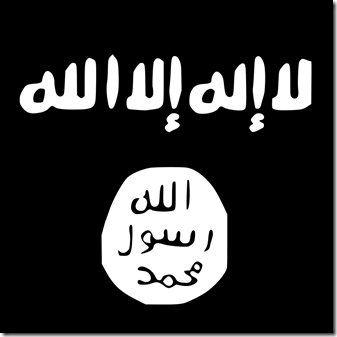 self-proclaimed status as an independent state it claims the territory of Iraq and Syria, with implied future claims intended over more of the Levant (e.g. Lebanon). It was established in the early years of the Iraq War and pledged allegiance to al-Qaeda in 2004. The group was composed of and supported by a variety of insurgent groups, including its predecessor organization, the Mujahideen Shura Council, Al-Qaeda in Iraq, Jaysh al-Fatiheen, Jund al-Sahaba, Katbiyan Ansar Al-Tawhid wal Sunnah, Jeish al-Taiifa al-Mansoura, etc., and other clans whose population profess Sunni Islam. It aimed to establish a caliphate in the Sunni majority regions of Iraq, later expanding this to include Syria. In February 2014, after an eight-month power struggle, al-Qaeda cut all ties to ISIL.
self-proclaimed status as an independent state it claims the territory of Iraq and Syria, with implied future claims intended over more of the Levant (e.g. Lebanon). It was established in the early years of the Iraq War and pledged allegiance to al-Qaeda in 2004. The group was composed of and supported by a variety of insurgent groups, including its predecessor organization, the Mujahideen Shura Council, Al-Qaeda in Iraq, Jaysh al-Fatiheen, Jund al-Sahaba, Katbiyan Ansar Al-Tawhid wal Sunnah, Jeish al-Taiifa al-Mansoura, etc., and other clans whose population profess Sunni Islam. It aimed to establish a caliphate in the Sunni majority regions of Iraq, later expanding this to include Syria. In February 2014, after an eight-month power struggle, al-Qaeda cut all ties to ISIL.
At the height of the Iraq War, it claimed a significant presence in the Iraqi provinces of Al Anbar, Ninawa, Kirkuk, and most of Salah ad Din, and parts of Babil, Diyala, and Baghdad. It claimed Baqubah as its capital. In the ongoing Syrian Civil War, the group has a large presence in the Syrian governorates of Ar-Raqqa, Idlib and Aleppo
In addition to attacks on government and military targets, the group has claimed responsibility for attacks that have killed thousands of Iraqi civilians. Despite significant setbacks to the group during the latter stages of the Coalition's presence in Iraq, by late 2012 the group was thought to have renewed its strength and more than doubled its number of members to about 2,500.
A letter and later an audio recording by Ayman al-Zawahiri, the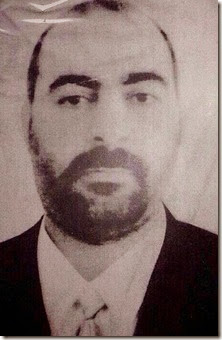 leader of al-Qaeda, was leaked to Al Jazeera in 2013, disbanding the Syrian faction of the Islamic State. However, the group's leader, Abu Bakr al-Baghdadi has made it clear that he contested this ruling on the basis of Islamic jurisprudence, and the group has since continued to operate in Syria. Starting in April 2013, the group made rapid military gains to control large parts of Northern Syria, where the Syrian Observatory for Human Rights described them as "the strongest group"
leader of al-Qaeda, was leaked to Al Jazeera in 2013, disbanding the Syrian faction of the Islamic State. However, the group's leader, Abu Bakr al-Baghdadi has made it clear that he contested this ruling on the basis of Islamic jurisprudence, and the group has since continued to operate in Syria. Starting in April 2013, the group made rapid military gains to control large parts of Northern Syria, where the Syrian Observatory for Human Rights described them as "the strongest group"
Leader of Islamic State in Iraq and the Levant has $10m bounty on his head and is said to wear mask when with commanders.
According to the Guardian:
“Described by some as "the new Osama bin Laden", he has a $10m US bounty on his head, only two pictures of him are known to exist and, contrary to his nom de guerre, he was born not in Baghdad but 78 miles north, in the city of Samarra.
Ambitious and violent, his reputation as a militant leader and tactician is as much a reflection of the disarray of other rebel groups in Syria and the poor showing of the Iraqi army this week.
Baghdadi is said to keep a low profile even among his own armed supporters, who amount to an estimated 7,000 fighters. He is not one for video-taped pronouncements; some reports claim – perhaps fancifully – that he wears a mask when addressing his commanders, earning him the nickname "the invisible sheikh".
According to Gateway Pundit and the Daily Mail Online al-Baghdadi was released by Obama from Camp Bucca in 2009
Today, ISIS's network of fighters in Syria and Iraq are better trained, equipped and manned than its predecessor, al Qaeda in Iraq, which U.S. forces fought for years and eventually decimated at the height of the Iraq war, according to the latest U.S. military assessments.
ISIS operates in formations, more like an army than a loose network of fighters, said a senior U.S. counterterrorism official. The group's sophisticated global recruitment network could allow it to redirect suicide bombers from targets in Syria and Iraq to neighboring countries, the official said.
The Obama administration, unable to operate openly in Iraq since the U.S. withdrawal and unwilling to intervene in Syria for fear of getting pulled into another conflict, has left itself few options to directly confront the growing threat, according to senior U.S. defense and intelligence officials.
Following ISIS's successes in Iraq this week, many officials are questioning whether the threat can still be contained. "Time is the real enemy here," a senior Obama administration official said.
When Mr. Panetta made his pronouncement about al Qaeda's strategic defeat, the revolution in Syria against the regime of Bashar al-Assad was only a few months old and U.S. intelligence agencies had no idea that the civil war there would become such a magnet for the world's Jihadi fighters, current and former U.S. officials say.
At the time of the U.S. pullout, American officials were predicting a "low boil" insurgency in Iraq that could last a decade but they thought al Qaeda's network there could be kept under control by Iraq's army, which the U.S. built up during the war.
Syria's civil war changed that, creating the biggest humanitarian crisis in a generation and a counterterrorism challenge which Rep. Mike Rogers (R., Mich.), the chairman of the House intelligence committee, called "worse than pre-9/11 Afghanistan."
Rogers said the threat was worse now because of the sheer quantity of territory under direct ISIS control and because of the large number of foreigners, including Europeans and Americans, who are joining the fight.
Arab officials say the U.S. contributed to ISIS's rise by failing to support more moderate forces in the Syrian opposition.
U.S. officials, in turn, say the Saudis, Qataris, Kuwaitis and other regional players—rivals for influence and divided over Syria strategy—funneled their own arms and money through competing patronage networks, splintering the opposition, while foreign fighters poured across the border from Turkey to join ISIS.
Qatari leaders, in particular, have long played down the threat posed by the hardline Islamists, telling their American counterparts that Jihadis entering Syria would be dealt with later, after Mr. Assad is defeated, according to U.S. officials. Qatari officials couldn't immediately be reached for comment. Keep in mind this is the country harboring the five recently released Taliban commanders.
Iraqi officials said they hoped recent events in Mosul and Tikrit would galvanize the U.S. to step up support against ISIS. "What we are saying is that there needs to be a sense of urgency," Iraq's ambassador to the U.S., Lukman Faily, told The Wall Street Journal.
But a senior U.S. military official said the White House's willingness to intervene will depend on how directly it perceives ISIS as a growing threat to the U.S. "You would need a major commitment of military forces to make a difference," the official said. "There is not a lot of appetite for that."
According to a Fox News report of this morning Al Qaeda-inspired militants pushed into a province northeast of Baghdad Friday, capturing two towns there after having already toppled cities in the country’s north, as the Obama administration considered possible responses to the crisis:
“Police officials said militants driving in machinegun-mounted pickups entered two towns in Diyala province late Thursday -- Jalula, 80 miles northeast of Baghdad, and Sadiyah, 60 miles north of the Iraqi capital.
Iraqi soldiers abandoned their posts there without any resistance, the officials told The Associated Press.
The fresh gains by the fighters from the Islamic State of Iraq and the Levant (ISIS) come as Prime Minister Nouri al-Maliki's Shiite-led government struggles to form a coherent response after the Sunni militants blitzed and captured the country's second-largest city of Mosul as well as other, smaller communities and military and police bases.
government struggles to form a coherent response after the Sunni militants blitzed and captured the country's second-largest city of Mosul as well as other, smaller communities and military and police bases.
The new offensive by the militant group is the biggest threat to Iraq's stability since the U.S. withdrawal at the end of 2011, and it has pushed the nation closer to a precipice that would partition it into Sunni, Shiite and Kurdish zones.
Trumpeting their victory, the militants declared they would impose Shariah law in Mosul, Iraq's second-largest city they captured on Tuesday, and other areas they seized, and promised to march on Baghdad, joined by Saddam Hussein-era loyalists and other disaffected Sunnis.
In northern Iraq, Kurdish security forces have moved to fill the power vacuum caused by the retreating Iraqi forces -- taking over an air base and other posts abandoned by the military in the ethnically mixed city of Kirkuk.
The Obama administration is still trying to determine how to assist the Nouri al-Maliki government, while making clear it does not want U.S. troops in the middle of the fight.
"We are not contemplating ground troops," White House Press Secretary Jay Carney said Thursday.
President Obama promised Thursday to send more military aid, without saying what kind of new assistance would be given to Baghdad. Two U.S. officials who are familiar with ongoing negotiations told The Associated Press the White House is considering air strikes and increased surveillance, requested this week by the Iraqi defense minister, as the insurgency nears Baghdad.”
…
“The development signals the worsening security environment in the northern part of the country. One senior official told Fox News that the focus for evacuation at this point is on people outside of Baghdad.
Two senior intelligence sources, though, told Fox News there is serious concern about how to evacuate other Americans out of Iraq if the situation further deteriorates.
"We need places to land, we need safe and secure airfields," one source said, noting that the militants are "seizing airfields and they have surface-to-air missiles, which very clearly threatens our pilots and planes if we do go into evacuation mode."
Sources said "all western diplomats in Iraq are in trouble," and American allies are scrambling to put together an evacuation plan. Military officials said there are "not a lot of good options."
Baghdad authorities tightened security and residents stocked up on essentials. Hundreds of young men crowded in front of the main army recruiting center in Baghdad after authorities urged Iraqis to help battle the insurgents.
Security officials said the Islamic State fighters managed to take control of two weapons depots holding 400,000 items, including AK-47 rifles, rockets and rocket-propelled grenades, artillery shells and mortars.
Several thousand Americans remain in Iraq, mostly contractors who work at the U.S. Embassy in Baghdad on programs to train Iraqi forces on American military equipment like fighter jets and tanks. Those being evacuated from Balad included 12 U.S. government officials and military personnel who have been training Iraqi forces to use fighter jets and surveillance drones.
Other U.S. contractors are at a tank training ground in the city of Taji, just north of the capital, that is still in operation for now.
To me this is reminiscent of the panic and evacuation from Warsaw in 1939 as the Nazi blitzkrieg rolled through Poland.
Given the incredible American sacrifices over nearly a decade, including nearly 4,400 deaths, it seems an absolute shame that all that hard-won progress might be lost. But given the deep ethnic and religious schisms there, I never had much confidence that the place would remain stable once the last U.S. soldiers left. No matter the count of purple fingers Iraq, like the rest of the countries ion the region, are not ready for democratically-elected self-government. There will never be peace or tranquility between the Sunnis and Shiites. They have been each other’s throats since the ninth century. The only time they take a break is to attack westerners.
Iraqi Prime Minister al-Maliki has called for U.S. air support to help defeat the ISIS insurgents. Where would this air support come from? Carriers in the Persian Gulf and planes based in Saudi Arabia and Turkey are all we can muster. And we could use drone strikes. Of course we could fly a few B-2s from Whiteman Air Force Base in Missouri, but what effect would they have on these insurgent forces. Any of these air strikes to be effective must be coordinated with ground forces — and these we do not have.
The only real target is the main highway from Tikrit to Baghdad. Yes we could cut off this main artery to the Iraqi capital, but for how long. The tons on bombs dropped in Afghanistan did not do much to blunt the Taliban fighters.
Even if Obama wanted to put U.S. forces on the ground in Iraq we do not have the resources or time to do so. It would take 30 to 50 thousand troops to make a difference. This is something I hope we will not do.
Biden’s great success has turned into the great nightmare. What can the U.S. really do to blunt the advance of the ISIS? Not much. Will this turn of events affect the west and the United States? You bet it will. It is already affecting oil prices around the world. Iraq and Syria will become the recruiting and training ground for the next wave of terrorist. Now it is reported that more than a few of these ISIS terrorist carry European and U.S. Passports. With our southern border being the sieve that it is it will not be difficult for theses ISIS trained and motivated terrorists to enter the United States and there is not much we can do about it.
